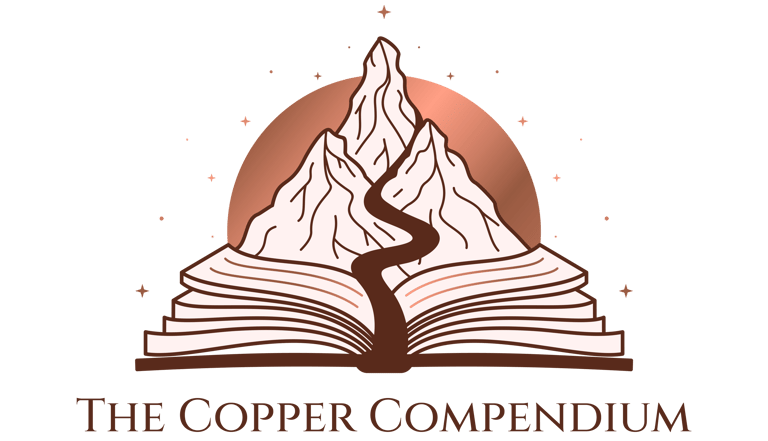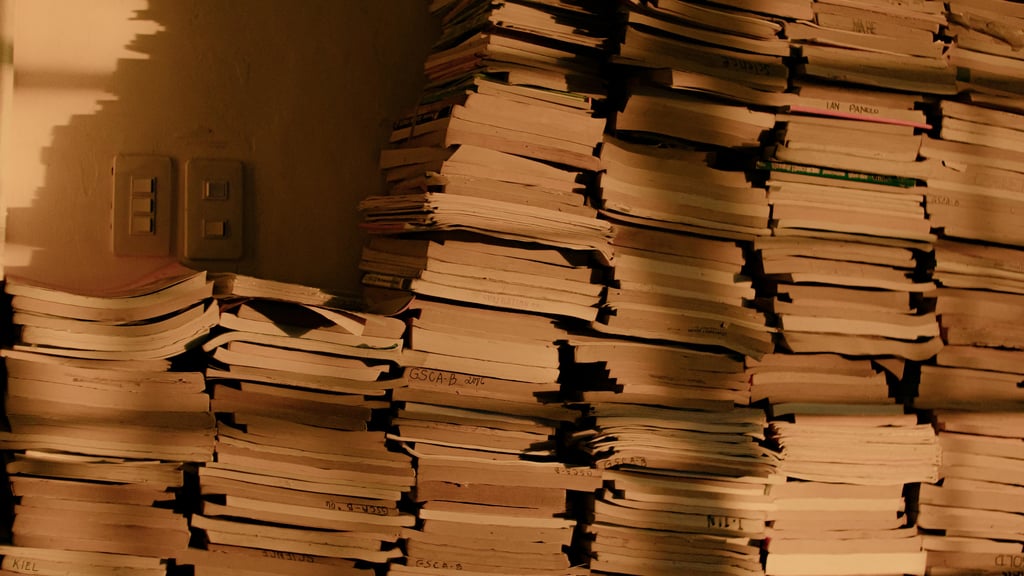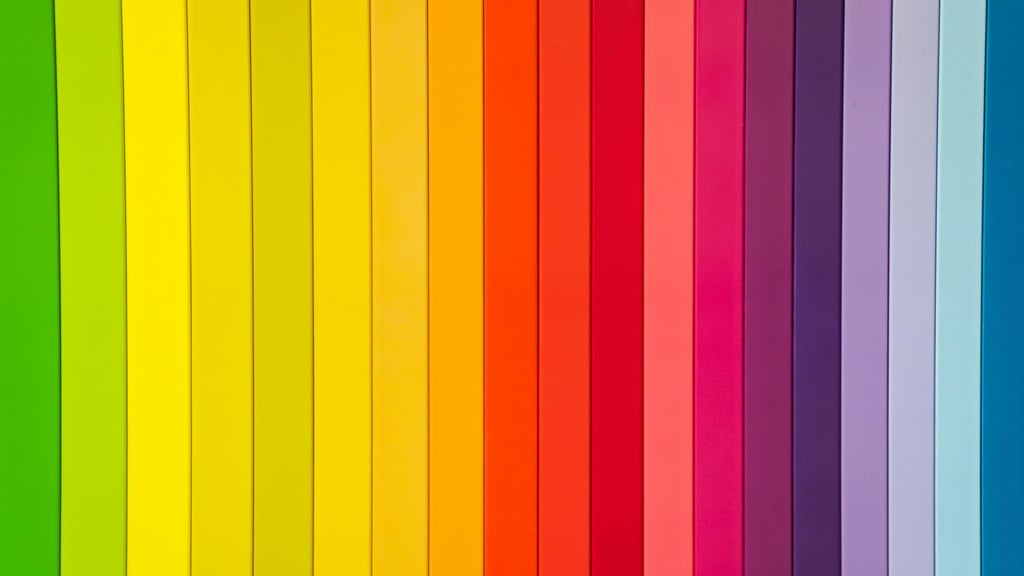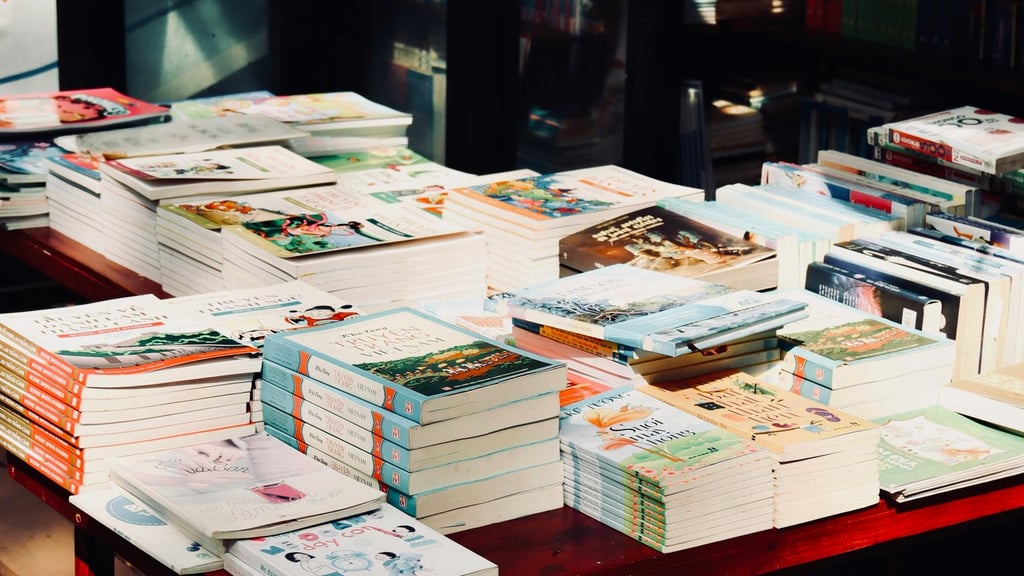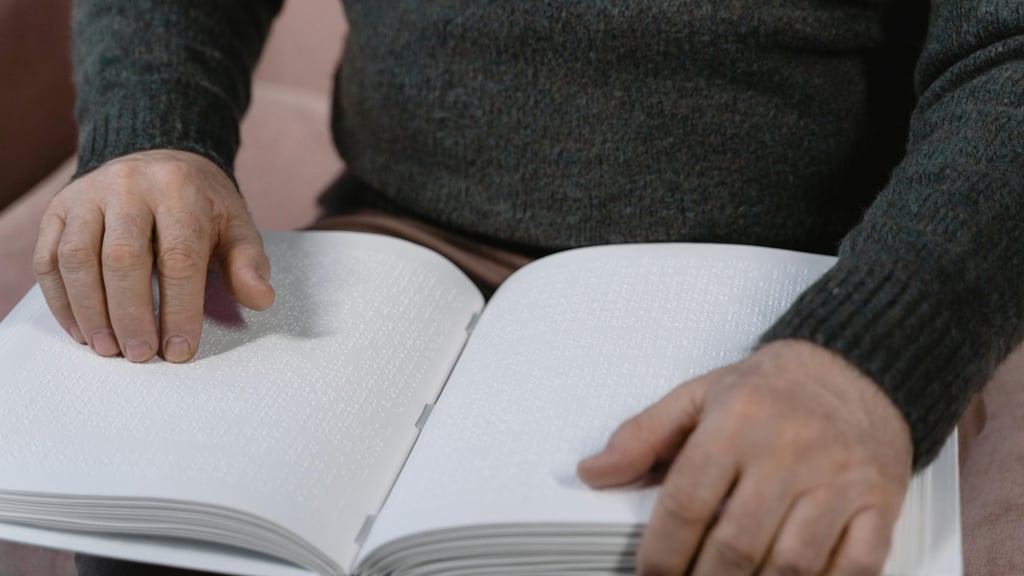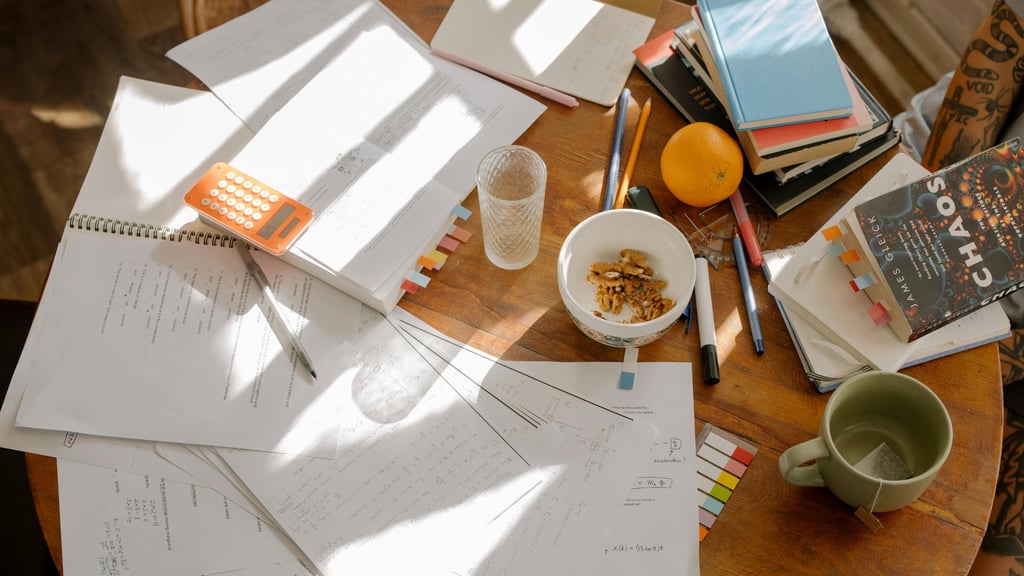
So, you want to make a TTRPG?
A compiled list of links to resources useful for creating your own TTRPGs. Based on the lists I posted previously on Tumblr and Bluesky, as well as similar resources created by others.
TTRPG RESOURCESGAME DESIGN
Daniel Copper
1/15/202513 min read

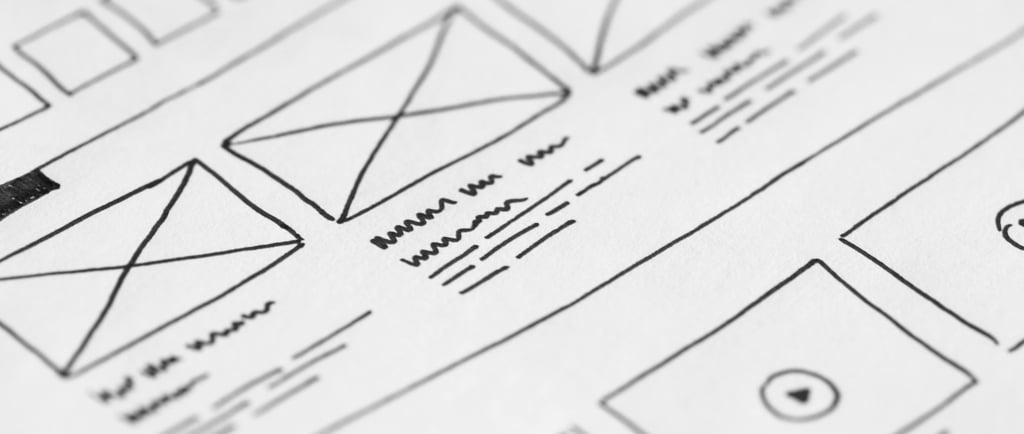

A note before I get started: this is a living resource. I'll aim to update it as I get new suggestions, but I am but one person. You can check the bottom of the page to see the date of the most recent update.
A while ago I made a thread on Bluesky, and a while before that I made a post on Tumblr, of resources for creating a TTRPG. I wanted to bring that list to a place that I actually have control over, or at least more so.
Something to note: this post focuses more on providing resources than providing advice. In future I'll likely have more to say on process, but for now I want to simply hand the tools to those who want to have a go.
As with the previous list I’ve made on this blog (on playing cards in TTRPGs), this one will be split into sections to make navigating it easier. I’ve added some additional resources since the original posts, and will aim to add more as and when they’re suggested to me.
You can find the original Tumblr post here, and the original Bluesky thread here. If you have a resource you think would be useful to add, send me a message on either site, or send me an email.


Other Peoples' Compilations
I’ll start by crediting some fantastic compilations that other people have made before me, without which this list would not be nearly as comprehensive. Not everything on these lists has been added here, so check them out too if you want to find further resources.
General Resource Compilations
Starshine Scribbles' TTRPG Creator Resources Masterpost
Created by Jonathon Greenall of Starshine Scribbles, this is the compilation that initially inspired me to make this post. Highly recommend having a look.
Dinoberry Press's "Game Design on a Cozy Budget"
Created by Nevyn and Jam, this is a nice to-the-point compilation of resources.
Clayton Notestine's (Explorers Design) Educational Blog Posts
Not a compilation as such, but an incredible wealth of information.
Hessan Yongdi's (Hessan's County) List of TTRPG Resources
There's tonnes here, including a lot more SRDs than I've included on this list.
Image Compilations
Skeleton Code Machine’s public domain image compilations
Compilation 1 - Compilation 2
A lot of the public domain image sites you will see further down were found here. Highly recommend looking through those suggested: I've ported over the ones I found easiest to use, but there are more if you're willing to dig a little.
Yochai Gal's list of public domain sources
Not much to say here: another sizeable quantity of sources to find public domain art, compiled by a well-known designer.


Systems
The core part of a TTRPG is, of course, the game and, at the centre of that, the system. When you make a TTRPG you have a choice: build your own system, or build on an existing one.
Existing Systems
If you want to jump straight into creating a game, using an existing system is the way to go. There are a whole host of them available to license, through what is typically known as a System Reference Document (or SRD for short). I’ve included a few examples of popular SRDs, as well as a couple of databases containing a bunch more.
Keeper
More than just a compilation of SRDs, I encourage you to explore the other features you'll find here. Created by René-Pier Deshaies (Fari RPGs).
R. Rook Studios' SRD Database
Created by Richard Ruane of R. Rook Studios, this database contains a tonne of SRDs, as well as specifying the license to follow for each.
24XX
Based on the 2400 series of RPGs, this SRD was created by Jason Tocci. It uses the full set of polyhedral dice, and has been used for a tonne of games.
Caltrop Core
I've used this one myself! It uses a pool of d4s with levels of success and is a fantastic jumping in point for designers old and new. Created by Lex Kim Bobrow (Titanomachy RPG). Here's a collection of examples using the SRD (and sibling SRDs).
Carta
If you're looking to make a solo game, Carta should absolutely be on your radar. It's best used for exploration-focused games, relying on playing cards laid out in a grid. Created by Leon Richardson (Peach Garden Games).
Forged in the Dark
Forged in the Dark games use a d6 pool and levels of success, with the system based on Blades in the Dark by John Harper. Here's an itch.io collection of games using it and one from the official website.
LUMEN
Created by Spencer Campbell (Gila RPGs), LUMEN is designed for action-heavy, rules-lite games. Spencer notes that it's not really an SRD - it's a combination of system, design advice and how to lean into the system's strengths. Like Forged in the Dark, this system uses d6 dice pools.
Powered by the Apocalypse
Possibly the most popular framework upon which to build in the independent TTRPG scene, the link here doesn't link to an SRD - Powered by the Apocalypse (or PbtA) isn't a system in the same way as the others listed here. Instead, the link here is to the webpage of the creators (Meguey and Vincent Baker) of the original PbtA game, Apocalypse World. It explains the approach, as well as some typical things you might find in self-proclaimed PbtA games.
Wretched and Alone
Wretched and Alone is based on The Wretched by Chris Bisette, and the SRD is written by Matt Sanders. Designed for solo play, like Carta, the system is, by its own admission, best used for games where characters struggle against insurmountable odds.
Building Your Own System
Building your own system is the complicated option, but it allows you to customise everything to exactly how you want it. You can always tweak an SRD, but if you want to go to the most granular level, this is the option for you. Key to this in many cases is probability, so I’ve included links to two sites that help with dice probabilities.
Probability Websites
AnyDice
I've used this one quite a lot, and it can do some quite complicated dice calculations if you can get to grips with the coding element it has. Very worth using.
Troll Dice Roller
A nice alternative to AnyDice with quite a nice amount of depth, from playing around with it a little it seems very workable, and possibly as detailed in its control as AnyDice.
Design Advice
There are plenty of people who can offer advice when it comes to making your first game. Here's a few blog posts other designers have made about how to go about designing a TTRPG.
Lex Kim Bobrow's (Titanomachy RPG) "How I learned TTRPG design" post series
Part 1 - Part 2 - Part 3
As listed above, Lex is the designer behind the excellent Caltrop Core system. They've also published a bunch of other games that are worth checking out.
Skeleton Code Machine's "Make your own one-page RPG" blog series
Part 1 - Part 2 - Part 3 - Part 4 - Part 5 - Part 6
One page games are a tonne of fun to make, and are a great entry point for new designers. This guide walks you through making one.
Playtesting
Once you’ve built a system and a game, you’ll need to playtest it. There are communities for that. I’ve included links to a few.
Break My Game
While primarily focused on board games, I've heard good things about the community. What I can see on the website seems primarily US-based, but it could still be useful for people.
Questcheck
Video introduction to Questcheck
Questcheck was created by Trekiros as a way for designers to find playtesters, and playtesters to get rewarded for their time and effort. The concept seems solid and, while I've yet to use it myself, there's a decent number of people who've taken the leap, both on the designer and playtester side.
Reddit Playtesting Community
I know, I know. It's Reddit. However, a lot of people use Reddit. Might be worth a shot.


Graphics
Written and tested the game? You can publish it now, or you can do fancy graphics and layout. There are numerous steps to this, none of which are strictly compulsory. I’ve got links here for the basics of graphic design, colours and fonts (images are further down). As a general rule, double check the license of anything you plan to use commercially, including on the sites listed here. I’ve done my best to make sure these are useable, but licenses can be changed.
Graphic Design Fundamentals
For those that want a little bit of a guide on how to begin laying out a game or similar, the links in this section should be of some use. For now this is... fairly dominated by the resources of one person, but hopefully it can be expanded upon.
Explorers Design
Clayton Notestine of Explorers Design has created some fantastic resources for budding graphic designers and layout artists. Highly recommend checking the Explorers Design blog out for more excellent advice and resources.
The Classic Explorer Template (and Full Version)
A clean, easy-to-use template for formatting a game.
Design Principles Cheatsheet
A set of general rules for graphic design, for quick reference.
Thumbnail Sheets
A set of pre-made thumbnails for sketching potential layouts, for an array of different paper ratios.
Typesetter Template
A template to speed up the process of finding a body (main text) font for your game, and all the steps that go with.
Colour Schemes/Colour Palettes
Colour is important and not all colour is made equal (even only using black and white is a conscious design choice!). Key to a graphic designer's toolkit is understanding what colours to use where and what colour can and can't be used in specific applications. For the basics, you should have a look at the difference between CMYK and RGB colour. If you want to get more advanced, delve into the murky waters of colour theory. I can't pretend to be an expert here, but I love picking a nice colour palette for my work as much as the next person!
Basic Colour Theory
CMYK vs RGB and Why it Matters
Colour Palettes for Affinity
Colour palettes created for the Affinity Suite by Exeunt Press. Includes a palette based on itch.io thumbnails, one based on Mork Borg and one based on Mixam's recommended printable colours.
Coolors
A website for making a colour palette for a project very quickly. Incredibly easy to spend far too much time here.
Paletton
A website for making colour palettes. A little more complex than Coolors, but worth checking out.
Fonts
Fonts (or, more accurately, typefaces) are crucial, and most fonts that come pre-installed on your computer can’t be used for commercial purposes without an additional license. I use two primary sites due to their clear license listing.
DaFont
Google Fonts
There are so many fonts here, almost exclusively under the Open Font License (OFL). Have a browse.
TTRPG Specific Fonts
TTRPGs often have very specific font requirements, so here’s 2 that allow game-relevant symbols to be added in-text.
Dicier
Created by Speak the Sky, this font is, frankly, incredible. The amount of options and thought put in boggles my mind.
Polymath
Created by Hedgemaze Press, directly inspired by Dicier. Looking forward to trying it out.
Design/Layout Programs
Different designers want different levels of control over how their game is laid out. Here's a short list of programs you might want to consider when converting your game from draft to publication.
Affinity
The Affinity suite has been my go-to for design since I first tried it. It's set up as a competitor to Adobe, with 3 programs in its lineup. For photo editing and art (as an alternative to Photoshop) Affinity has Affinity Photo. For graphic design and vector art (as an alternative to Illustrator) Affinity has Affinity Designer. And, most importantly for TTRPG designers, for book layout and formatting (as an alternative to InDesign) Affinity has Affinity Publisher. There's a free 7-day trial for each program and they regularly go on sale.
While it does cost, the Affinity suite is comprehensive and, unlike Adobe, there's no subscription. Buy it once, own it.
Canva
Browser-based, filled with templates and incredibly popular for layout, Canva is likely one you've heard of. Lately I believe I've heard some stuff about AI on Canva, so that might put some people off.
Libre Office
Libre Office is another suite set up as an alternative to a popular set of programs, in this case the Microsoft suite. While you might not be able to get quite so fancy a layout in Libre compared to Affinity Publisher or InDesign, it's perfectly serviceable for a completely free, open-source set of programs.
Photopea
What if I told you there was a program almost as powerful as Photoshop that is not only free but also based entirely in-browser? That's Photopea. Go check it out.
Scribus
Scribus is a program I've heard a lot about but never touched. From what I understand, it's a free option for layout (like InDesign or Publisher). I understand that it has a steep learning curve but for those whose means are limited, it might be a good option.


Images and Art
This is the big one. Personally, I'm a proponent for human-made art: I'm very firmly anti-AI. To that end, I've gathered a host of resources to make producing games with nice art and imagery as easy as possible, even for the artistically disinclined, without turning to the theft-automator.
General Stock Image Sites
General stock image sites (check licenses to be sure before using images). I’ve noted those that include vectors, as well as those that have felt the blight of AI imagery. I'm going to run through these rapid-fire, without (or with less of) the commentary you've seen in previous sections, as there are a lot.
FreeImages
Freepik
Contains both vector graphics and, regrettably, AI.
Freerange
Gratisography
Libreshot
Life of Pix
Pexels
My go-to for stock pictures, as you'll have seen in this blog. A good range and, to my knowledge, not yet infested with AI.
Pixabay
My second most used site. You can filter directly for vector graphics here but regrettably the site as a whole has become increasingly plagued by AI imagery in the past year or so.
Shopify
Surprisingly, Shopify has a reasonably-sized collection of stock images available to use!
StockSnap.io
Stockvault
Unsplash
Historical, Vintage and Museum Collections
Public domain is a wonderful thing. There are a load of museums whose collections can be browsed online. Many have scanned versions of artwork or artifacts that can be freely licensed. Equally, many people have dedicated their time to creating free-to-use collections of vintage art and photographs. There's a wealth of stuff available, if you know where to look. Once you've finished looking here, check out the collections I mentioned earlier for more. As with the previous section, we're going rapid fire with minimal commentary here.
Make sure to check your filters while browsing these sites to ensure you can actually use the images in the ways you plan to.
Artvee
Biodiversity Heritage Library
Getty
HeritageType
Library of Congress
New York Public Library Digital Collections
Old Book Illustrations
Public Work
Rawpixel
Rijksmuseum
Seedling Games' Cleaned-Up Public Domain Art
Smithsonian
The Met
Vintage Stock Photos
Yale Center For British Art
Wikimedia Commons
Icons and Vector Graphics
Some games might need less in the way of photos or traditional art and more in the way of icons or vectors. While some of these sites were aimed at computer game developers, there's nothing stopping you using them in your TTRPG (unless the license forbids specific uses: always check).
Flaticon
Game-icons.net
Reshot


Publishing
The most accessible way to show people what you’ve made is the internet, so the majority of ways listed here will be digital. However I’ve also included some links for crowdfunding, as well as a few for physical publishing.
Digital
The two most popular places to publish TTRPGs are itch.io and DriveThru RPG. I’ve included a few useful links for each.
DriveThruRPG
The go-to for many people, DriveThruRPG is without doubt the biggest TTRPG-focused storefront on the internet. Publications from a lot of large publishers can be found here, as well as entrants from smaller designers. The setup process is more complicated than itch.io, but visibility is better. Unlike itch.io, you don't get to pick the cut DriveThruRPG takes: at time of writing they take 35% if you don't sell exclusively (digitally) through them, or 30% if you do.
DriveThruRPG also has dedicated platforms for fan content/homebrew for particular systems, like Dungeon Master's Guild and Pathfinder Infinite, though those work slightly differently (and typically not as favourably for you, the designer).
itch.io
While primarily focused on video games (it's rare to spot anything else on its homepage), itch.io has a thriving tabletop community of publishers. You can choose the amount of each sale that goes to itch.io, too, which gives it an edge over popular alternatives. Discoverability can be an issue. Setting up an account is very easy, and the barrier to entry is low.
itch.io Page Template
Created by Star West, these page templates will be incredibly useful for those setting up an itch.io product page for the first time, with no idea where to begin. Check out their page for more useful resources.
Crowdfunding
Recent years has seen an explosion in crowdfunding of TTRPGs and it would be remiss of me not to mention it as an option. It’s by no means a simple operation, so this one isn’t for beginners. Definitely do you research and make sure you understand the benefits, risks and responsibilities before dipping your toe in.
Backerkit
Crowdfundr
Gamefound
Kickstarter
Physical
There are a lot of options available for producing a physical version of your game. There are a lot of printshops, with Mixam being the most well-known and widespread, and even DriveThruRPG having print-on-demand services. I would recommend looking into local, smaller print shops if you can. The other resources here are adjacent to the aim of having a version of your game that you can hold in your hands.
For now this section is on the smaller side, so additional suggestions are encouraged.
Mixam
Mockups Design


Accessibility
Resources on how to make what you publish accessible for as many people as possible. The majority of these resources focus on making documents screen-reader friendly. Thanks to Matt Sanders for providing several of these links.
An Array of Resources for Improving Accessibility
Freely Available Screenreader
Keyboard Shortcuts Guide for the Screenreader
Guide to Making Your PDF Screenreader Friendly
Visual Accessibility Skills Toolkit (VAST) Guides


Miscellaneous Resources
Everything I couldn’t fit anywhere else. Expect a lot of variety of resources here, and new categories being added based on what gets put here.
Rascal News
If you haven't heard about Rascal yet, I guess you're new here. They're an independent news publication focusing on the tabletop industry and producing consistently excellent work. They also have an announcement section!
TTRPG Creator Directory
Created by D. C. Bradshaw, there's a huge amount of talent contained within. Go find some cool people to work with!
UK Conventions List
Created by Dave Wright, this list is invaluable for finding your local convention if you're based in the UK.
UK Tabletop Industry Network (UK TIN)
A fantastic community of UK-based tabletop designers, creatives and members of the industry. I joined the community last year and have found the guidance of the people I've met there invaluable.

This list was last updated 27th March 2025.

